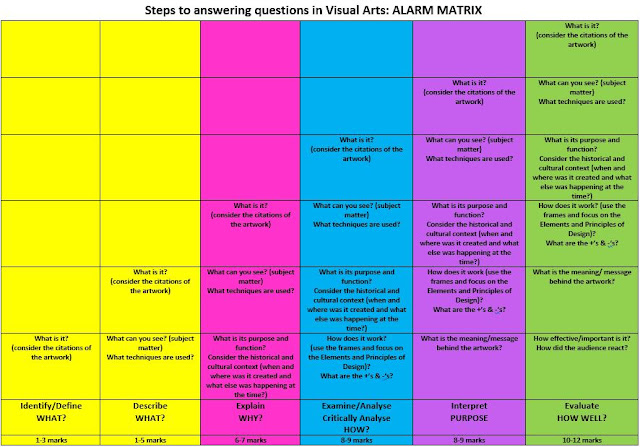Classroom survey
Surveys are a useful way to gain student feedback. If you want students to be honest with their answers, always make the survey anonymous.
I'm working with a small group of teachers to improve risk taking behaviours in the classroom. The purpose of the survey is to understand the link between students taking learning risks and the development of a safe classroom. The survey allows us to understand whether our existing strategies are helpful to our students. It also provides us with an insight into how students are going at the moment.
Last week, I gave my Year 11 students a link to the online survey. I was surprised with the positive feedback from my Yr 11 Visual Arts class.
Surveys are a great way to understand what is working and what needs improvement in the classroom. From reading the responses, I can also identify areas that I need to improve- provide more positive / constructive feedback, understand my students and make the classroom a comfortable place to take the risk. Through this experience, I can then implement the correct strategies.
Some of the questions require students to tick the right boxes, others require a short answer response:
1. I enjoy the content in this subject.
2. I feel comfortable sharing my thoughts with the rest of the class
3. When I am unsure or confused, I readily ask the teacher for help
4. I confidently read aloud in class
5. My participation in class activities depends on my relationship with my teacher
6. There are many things that can affect how comfortably people interact in a classroom and take risks like contributing to class discussion, asking questions, answering questions aloud etc. Please choose THREE things from the list below which are most helpful in you being able to take risks like contributing to class discussion, asking questions and answering questions
7. Please explain why these three things would make you more likely to take such risks in your class.
8. What are three things that your teacher could do to help you take learning risks like answering and asking questions, contributing to discussion and debate etc.
9.There are many ways in which we like to learn information. (a) Visual learners benefit most from visual stimuli such as demonstrations, diagrams, graphs, written directions, video tutorials, e-presentations etc. Information presented spatially, with images is most useful for those who favour learning from visual cues. (b) Auditory learners show a preference for aural information. They respond best to lecture-style formats of delivery that involve listening and talking. Auditory learners usually enjoy discussions, debates and talking to others. (c) Tactile learners prefer practical, experiential education. As a result, tactile learners may struggle to concentrate in traditional learning environments. Study that involves role-play and incorporates movement will be more engaging for tactile learners eg participating in experiments, taking part in a roleplay, sculpting and molding materials etc. Which learning style MOSTLY seems like you?
10. How often do you get to use this learning style in class?
11. Would being able to answer questions or solve problems etc. using your dominant learning style, help you to participate better in class activities?
12. Please explain your answer to the question above.
13. Thank you for your time and co-operation. If you would like to take part in a focus group in Term 3 concerning issues such as taking risks in your learning, please record your name below.








Comments
Post a Comment